Results 6,161 to 6,170 of 12096
Thread: Anandtech News
-
07-26-16, 10:16 AM #6161
Anandtech: MSI Shows New Radeon RX 480 Gaming Cards, with an 8-pin
Today MSI is announcing the latest entry in the Gaming X GPU line with the Radeon RX 480 Gaming X 8G/4G cards as well as non-X variants. The main difference between the non-X and X cards is in the core and memory frequencies, with the X card having the higher performance. In return, there will be a small price difference between the two variants.
Gallery: MSI RX 480 Gaming X 8GBMSI Radeon RX 480 Gaming Specification Comparison GAMING X 8G GAMING X 4G GAMING 8G GAMING 4G Core Clock Silent 1266 MHz Gaming 1303 MHz 1279 MHz OC Mode 1316 MHz 1292 MHz Memory Clock (Reg/OC) 8.0/8.1 Gbps GDDR5 8.0 Gbps GDDR5 VRAM 8 GB 4 GB 8 GB 4 GB Launch Date TBD Mid August 2016 Launch Price Unknown ??? 





Starting with appearance, all four models shown today feature an angular, aggressive, red and black design for the cooler, which glows through the red highlights. On the side of the card is an MSI logo lit by customizable RGB lighting which is adjusted through the MSI Gaming software bundled with the card. Around back there is a full cover back plate on the Gaming X cards, and moving back around to the cooler we have two large fans over a full-length cooler and PCB. Running through the heatsink are three heat pipes at 8mm thick each. These heat pipes are squared off at the bottom and mated to a nickel-plated copper baseplate, aiming to increase contact with the GPU core and hence increase heat transfer. This cooler is toned down from that used on the highest end cards, but should still make for a very capable cooling solution.
Moving from form over to function, MSI’s RX 480 Gaming X cards are built from what MSI calls “Military Class 4” components, which is marketing speak for their choosing quality components to assemble this card. For power, the cards have a single 8-pin connector, and for the output we have two HDMI, two DisplayPort, and one DVI-D connection. This appears to be a very popular arrangement this generation, allowing one HDMI port for a monitor and another for a VR headset. MSI also use their TORX Fan 2.0 design which they say will generate 22% more air pressure, and like other Gaming and Gaming X cards the fans will shut off at temperatures below 60C. If true these fans coupled with the Twin Frozr VI heatsink could do an admirable job of quietly handling any heat an RX 480 can muster. For performance numbers on the Gaming X, we have a moderate clock speed gain over the reference card in OC mode, while the memory is bumped up to 8.1 Gbps in OC mode.
With no word on pricing, both 8GB and 4GB versions of the MSI Radeon RX 480 Gaming X are expected to be in stores worldwide around the middle of August 2016.
More...
-
07-26-16, 12:07 PM #6162
Anandtech: HP Updates The Z240 Workstation With The Core i7-6700K
HP has an interesting announcement today - they are refreshing their existing Z240 workstation, which is targeted towards small and medium-sized businesses, with a non-Xeon Core i7 based processor. It was already available with Skylake based Xeon CPUs, up to the Intel Xeon E3-1280 v5. That’s a 3.7-4.0 GHz Xeon, with 4 cores, 8 MB of cache, with an 80-Watt Thermal Design Power (TDP). That’s certainly an excellent choice for a lot of workloads that workstations are tasked with, and with support for ECC memory, reliability under load is also a key factor. But HP has been talking to their customers and found that many of them have been choosing to forgo the error checking capabilities of ECC and have been building or buying equivalent gaming-focused machines in order to get more performance for the money. Specifically, they have been building desktops with the Core i7-6700K, which is an unlocked 4.0-4.2 GHz quad-core design, with a 91-Watt TDP, and in pure frequency can offer up to 13% more performance than the fastest Skylake Xeon.
So armed with this data, HP has refreshed the Z240 line today, with the usual Skylake Xeons in tow but also an option for the Core i7-6700K. This desktop sized workstation supports up to 64 GB of DDR4-2133, with ECC available on the Xeon processors only. It’s a pretty interesting move, but can make a lot of sense if most customers would probably rather purchase a workstation from a company like HP so that they get the testing and support offerings found with workstation class machines. If some of them had to resort to building their own in order to get the best CPU performance, HP has made a wise decision to offer this.
Despite the higher TDP, HP has created fan profiles which they say will allow full turbo performance with no thermal throttling, while at the same time not exceeding their acoustic threshold which I was told was a mere 31 dB. Although they have offered closed loop liquid cooling on their workstations in the past, the Z240 achieves this thermal performance with more traditional air cooling.
(Edit from Ian: It has not been stated if HP will implement a variation of MultiCore Turbo/Acceleration at this time, but given the limited BIOS options of the major OEMs in recent decades, this has probably been overlooked. Frankly, I would be surprised if the BIOS engineers had even heard of mainstream motherboard manufacturers implementing the feature, though I will happily be proved wrong.)
The Z240 is currently offered with a wide range of professional graphics, if required, including the NVIDIA NVS 310, 315, and 510, and Quadro up to the M4000. With yesterday’s announcement of the Pascal Quadro, and today's announcement of the new Radeon Pro WX, they are likely to offer these soon. If a user requires AMD professional graphics, HP will offer the FirePro W2100, W5100, W4300, and the W7100 with 8 GB of memory.
A simple device refresh mid-cycle is far from unexpected, but it is pretty interesting that by talking to their customers HP has found that many of them would prefer higher single threaded performance with a Core i7-6700K, rather than the Xeon ecosystem with a focus on stability and ECC. It will be interesting to see if Intel reacts to this, since the Xeon is a nice high margin product.
As a small comparison, the highest clocked Xeon E3 v5 is the E3-1280 v5 at 3.7-4.0 GHz, and has a recommended customer price of $612 on Intel Ark. The one underneath is the E3-1275 v5 at 3.6-4.0 GHz, but is a more palatable $350. This latter part compares in price to the Core i7-6700K, which is at $350 list price also, however the i7-6700K has the margin on frequency at 4.0-4.2 GHz. Comparing the two Xeons to the Core i7, HP can offer a bit more performance with the trade-off of no ECC support, and in the case of the peak Xeon, save some money as well. For those that need the top raw CPU performance available especially for single-threaded workloads, short of overclocking, this is the way to go.
Source: HP
More...
-
07-26-16, 09:38 PM #6163
Anandtech: Apple Announces Q3 FY 2016 Results: App Store Up, Hardware Down
Today Apple announced their third quarter results for their fiscal year 2016. Much like last quarter, Apple has struggled to maintain the sales pace of the iPhone 6s, compared to the iPhone 6. For the quarter, Apple had revenues of $42.358 billion, which is down 11% from a year ago. Gross margin was $16.106 billion, down from $19.681 billion in Q3 2015, and percentage wise it is 38.0%. Operating income was $10.1 billion, down from $14.1 billion last year, and net income was down almost $3 billion to $7.8 billion. Diluted earnings per share were $1.42, down from $1.85 a year ago. Despite the lower quarter, Apple did beat expectations which has helped their share price in after-hours trading.
Apple announced a dividend of $0.57 per share payable on August 11th to shareholders of record as of August 8th. They also returned over $13 billion during Q3 through share buy-backs and dividends, and they have completed almost $177 billion of their $250 billion capital return program.Apple Q3 2016 Financial Results (GAAP) Q3'2016 Q2'2015 Q3'2015 Revenue (in Billions USD) $42.358 $50.557 $49.605 Gross Margin (in Billions USD) $16.106 $19.921 $19.681 Operating Income (in Billions USD) $10.105 $13.987 $14.473 Net Income (in Billions USD) $7.796 $10.516 $10.677 Margins 38.0% 39.4% 39.7% Earnings per Share (in USD) $1.42 $1.90 $1.85
iPhone sales are far and away the largest part of the company, and this quarter Apple sold 40.4 million handsets. That is down from the 51.2 million last quarter, and 47.5 million in Q3 2015, meaning iPhone sales were down 15% year-over-year. This resulted in revenue of $24 billion, down 23% from a year ago. It’s certainly a noticeable drop, and it shows just how successful the iPhone 6 was when it launched.
Moving on, iPad sales continued their slow and steady decline. Sales of the tablet were just a hair under ten million for the quarter, which is a drop of 9% year-over-year. Revenue was $4.9 billion, which is up 7%. A year ago, the average selling price of the iPad was $415, but this quarter, average selling price for the iPad rose $85 to $490. Declining sales of the iPad Mini, as well as new sales of the higher priced iPad Pro are certainly the case, but Apple doesn’t break out the numbers for individual models to know just how much each was a factor.
The Mac didn’t fare very well either, with unit sales of 4.25 billion, which is down 11% year-over-year. This resulted in revenue of $5.24 billion, down 13%. With basically no Mac refreshes in a long time, they are no longer outperforming the PC market as a whole, which was the case for the last while.
Apple’s “Other Products” includes Apple TV, Apple Watch, Beats, iPods, and accessories, and while none of this is broken down by sub-category, the Other Products as a whole also fell 16% in revenue compared to Q3 2015, with revenues for this quarter of $2.22 billion.
The one segment in which Apple had strong growth was their Services segment. Services grew by 19% compared to Q3 2015, with revenue of $5.976 billion, which is up almost a billion or 19% year-over-year. Q2 2016 revenue was pretty much the same at $5.991 billion, meaning services have once again outpaced both Mac and iPad sales, and now represent the third largest segment at Apple.Apple Q3 2016 Device Sales (thousands) Q3'2016 Q2'2016 Q3'2015 Seq Change Year/Year Change iPhone 40,399 51,193 47,534 -21% -15% iPad 9,950 10,251 10,931 -3% -9% Mac 4,252 4,034 4,796 +5% -11%
Overall, it’s the second consecutive quarter of revenue loss, and last quarter was the first time that happened since Q1 2003, so Apple is in somewhat unfamiliar territory. Their guidance for next quarter is $45.5 to $47.5 billion, and margins between 37.5% and 38%. That guidance is also for a loss of revenue, since Q4 2015 had the company coming in at $51.5 billion, and 39.9% margins. It will be interesting to see if hardware refreshes in the fall can stop the drop in sales.Apple Q3 2016 Revenue by Product (billions) Q3'2016 Q2'2016 Q3'2015 Revenue for current quarter iPhone $24.048 $32.857 $31.368 56.8% iPad $4.876 $4.413 $4.538 11.5% Mac $5.239 $5.107 $6.030 12.4% iTunes/Software/Services $5.976 $5.991 $5.028 14.1% Other Products $2.219 $2.189 $2.641 5.2%
Source: Apple Investor Relations
More...
-
07-27-16, 07:16 AM #6164
Anandtech: Project Tango Demoed with Qualcomm at SIGGRAPH 2016
Project Tango at this point is probably not new to anyone reading this as we’ve discussed it before, but in the past few years Google has been hard at work making positional tracking and localization into a consumer-ready application. While there was an early tablet available with an Nvidia Tegra SoC inside, there were a number of issues on both hardware and software. As the Tegra SoC was not really designed for workloads that Project Tango puts on a mobile device, much of the work was done on the GPU and CPU, with offloading to dedicated coprocessors like ST-M’s Cortex M3 MCUs for sensor hub and timestamp functionality, computer vision accelerators like a VPU from Movidius, and other chips that ultimately increased BOM and board area requirements.
At SIGGRAPH today Google recapped some of this progress that we’ve seen at Google I/O as far as algorithms go and really polishing the sensor fusion, feature tracking, modeling, texturing, and motion tracking aspects of Tango. Anyone that has tried to do some research into how well smartphones can act as inertial navigation devices will probably know that it’s basically impossible to avoid massive integration error that makes the device require constant location updates from an outside source to avoid drifting.
With Tango, the strategy taken to avoid this problem works at multiple levels. At a high level, sensor fusion is used to combine both camera data and inertial data to cancel out noise from both systems. If you traverse the camera tree, the combination of feature tracking on the cameras as well as depth sensing on the depth sensing camera helps with visualizing the environment for both mapping and augmented reality applications. The combination of a traditional camera and a fisheye camera also allows for a sort of distortion correction and additional sanity checks for depth by using parallax, although if you’ve ever tried dual lens solutions on a phone you can probably guess that this distance figure isn’t accurate enough to rely completely on. These are hard engineering problems, so it hasn’t been until recently that we’ve actually seen programs that can do all of these things reliably. Google disclosed that without using local anchor points in memory that the system drifts at a rate of about 1 meter every 100 meters traversed, so if you never return to previously mapped areas the device will eventually have a non-trivial amount of error. However, if you return to previously mapped areas the algorithms used in Tango will be able to reset its location tracking and eliminate accumulated error.
With the Lenovo Phab 2 Pro, Tango is finally coming to fruition in a consumer-facing way. Google has integrated Tango APIs into Android for the Nougat release this fall. Of course, while software is one part of the equation, it’s going to be very difficult to justify supporting Tango capabilities if it needs all of the previously mentioned coprocessors in addition to the depth sensing camera and fisheye camera sensors.
In order to enable Tango in a way that doesn’t require cutting into battery size or general power efficiency, Qualcomm has been working with Google to make the Tango API run on the Snapdragon SoC in its entirety rather than on dedicated coprocessors. While Snapdragon SoCs generally have a global synchronous clock, Tango really pushes the use of this to its full extent by using this clock on multiple sensors to enable the previously mentioned sensor fusion. In addition to this, processing is done on the Snapdragon 652 or 820’s ISP and Hexagon DSP, as well as the integrated sensor hub with low power island. The end result is that there enabling the Tango APIs requires no processing on the GPU and relatively minimal processing on the CPU such that Tango-enabled applications can run without hitting thermal limits and allowing for more advanced applications using Tango APIs. Qualcomm claimed that less than 10% of cycles on the S652 and S820 are used on the CPU and less than 35% of cycles on the DSP are needed as well. Qualcomm noted in further discussion that the use of Hexagon Vector Extensions would further cut down on CPU usage, and that much of the current CPU usage was on the NEON vector units.
To see how all of this translates Qualcomm showed off the Lenovo Phab 2 Pro with some preloaded demo apps like a home improvement application from Lowe's which supports size measurements and live preview of appliances in the home with fairly high level of detail. The quality of the augmented reality visualization is actually shockingly good to the extent that the device can differentiate between walls and the floor so you can’t just stick random things in random places, and the placement of objects is static enough that there’s no strange floatiness that often seems to accompany augmented reality. Objects are redrawn fast enough that camera motion results in seamless and fluid motion of virtual objects, and in general I found it difficult to see any real issues in execution.
While Project Tango still seemed to have some bugs to iron out and some features or polish to add, it looks like as it is now the ecosystem has progressed to the point where Tango API features are basically ready for consumers. The environment tracking for true six degree of freedom movement surely has implications for mobile VR headsets as well, and given that only two extra cameras are needed to enable Tango API features it shouldn’t be that difficult for high-end devices to integrate such features, although due to the size of these sensors it may be more targeted towards phablets than regular smartphones.
More...
-
07-27-16, 09:36 AM #6165
Anandtech: Ten Year Anniversary of Core 2 Duo and Conroe: Moore’s Law is Dead, Long L
Today marks a full 10 years since the first Core 2 processors, and hence Intel’s 64-bit Core microarchitecture, were made officially available. These included a number of popular dual-core processor parts, including the seemingly ubiquitous E6400 and the Core 2 Extreme X6800. These were built on Intel’s 65nm process, and marked a turning point in the desktop processor ecosystem. To quote Anand in our launch review: ‘you’re looking at the most impressive piece of silicon the world has ever seen’. Today’s anniversary is somewhat bittersweet, as this week saw the official launch of the ‘final’ biannual International Technology Roadmap for Semiconductors report which predicts the stalling of smaller silicon manufacturing nodes and the progression of new design paradigms to tackle the next 10-15 years of semiconductor innovation.
More...
-
07-27-16, 12:03 PM #6166
Anandtech: Xiaomi Unveils Mi Notebook Air, from $525
Today Xiaomi has introduced its first pair of notebooks and unvieled the Mi Notebook Air family. As the name suggests, these are aimed head first into Apple's Air line of notebooks, albeit at a very different price point. The laptops feature 12.5” and 13.3” full HD displays and are based on Intel’s Core M as well as Core i5 microprocessors. The price of the ultra-thin all-metal notebooks starts from 3499 CNY ($525, although Xiaomi usually quotes prices including China tax, so $446 perhaps), which could make them very competitive in various markets. As with most Xiaomi products, they will be available in China first.
Xiaomi, which is known primarily for its smartphones business and superstar VP, Hugo Barra, positions its laptops as integrated parts of its Mi Ecosystem (which includes smartphones, an Android TV STB, tablets, power banks, headphones, a wrist band and even an air purifier). Their design resembles that of other devices from Xiaomi and uses all-metal silver and gold enclosures. Both notebooks are made by Tian Mi, a partner of Xiaomi, and will run Microsoft Windows 10 Home.
The entry-level laptop from Xiaomi is the Mi Notebook Air 12.5”, which is powered by the dual-core Intel Core m3-6Y30, featuring the Skylake microarchitecture as well as the ninth-generation of Intel's integrated graphics (Gen 9, HD Graphics 515 with 24 EUs). The CPU is rated at a 1.1/2.2 GHz core frequency (base/turbo), 4 MB of last level cache, and a 7W thermal design power (normally this CPU is rated at 4.5W, but the 1.1 GHz in the spec sheet implies that it is running in its 7W cTDP Up mode - this isn't a surprise given the size of the device. The laptop comes with 4 GB of LPDDR3-1866 RAM, 128 GB SATA SSD, 802.11ac 2x2 Wi-Fi, Bluetooth, 1 MP webcam, two microphones, custom AKG speakers and so on. It's not stated if the design uses dual channel memory at this point, and it would be interesting to find out. The system sports one USB Type-C port for charging and display output, one USB 3.0 Type-A port as well as one HDMI connector.Xiaomi's Mi Notebook Air Family Mi Notebook Air 12.5" Mi Notebook Air 13.3" CPU SKU Intel Core
m3-6Y30Intel Core
i5-6200U7W cTDP Up Base 1.1 GHz 2.3 GHz Turbo 2.2 GHz 2.8 GHz iGPU SKU Intel HD Graphics 515 (GT2)
24 EUs, Gen 9Intel HD Graphics 520 (GT2)
24 EUs, Gen 9Base 300 MHz Turbo 850 MHz 1050 MHz dGPU - NVIDIA GeForce 940MX DRAM 4 GB LPDDR3-1866 8 GB DDR4-2133 SSD 128 GB SATA (500 MB/s) 256 GB PCIe 3.0 x4 (1500 MB/s) Display 12.5" Full HD display 13.3" Full HD display Ports 1 x USB 3.1 (Gen 1) Type-C
1 x USB 3.0 Type-A
HDMI
3.5mm TRRS jack1 x USB 3.1 (Gen 1) Type-C
2 x USB 3.0 Type-A
HDMI
3.5mm TRRS jackNetwork 2x2:2 802.11ac with BT 4.1 Battery 37 Wh 40 Wh Dimensions H: 12.9 mm
W: 292 mm
D: 202 mmH: 14.8 mm
W: 309.6 mm
D: 210.9 mmWeight 2.35 lbs (1.07 kg) 2.82 lbs (1.28 kg) Colors Gold, Silver Price 3499 CNY
$5254999 CNY
$750
The Mi Notebook Air 12.5” features a display panel with 1920x1080 resolution, 170° wide viewing angle, 300 nit brightness as well as 600:1 contrast ratio. Despite the low memory, the main advantage of the Mi Notebook Air 12.5” over its bigger brother is its 11.5 hours rated battery life and low weight of 1.07 . From many points of view, the 12.5” laptop from Xiaomi attempts to combine the key advantages of Apple’s MacBook and MacBook Air (at least, from hardware perspective). It comes with Intel Core M, a common resolution screen, long battery life as well as thin-and-light form factor (like the MacBook). However, the system costs starting from 3999 yuan ($525), which means that it is more affordable than Apple’s MacBook Air.
The next up is the more powerful Xiaomi Mi Notebook Air 13.3”, which is based on the dual-core Intel Core i5-6200U (2.3/2.8 GHz, 3MB LLC, 15 W TDP, Intel HD Graphics 520, etc.) and is equipped with NVIDIA’s GeForce 940 MX discrete GPU featuring a 1 GB GDDR5 memory buffer. Xiaomi says that by equipping its 13.3” laptop with a standalone graphics processor it enables higher performance in games when compared with iGPU. The notebook sports 8 GB of DDR4-2133 memory, a 256 GB NVMe SSD with PCIe 3.0 x4 interface (with up to 1500 MB/s read speed, which means that they are running the PCH in low-power mode and reduce PCIe clock-rates), dual band 802.11ac 2x2 Wi-Fi, Bluetooth, a 1 MP webcam, two microphones, custom AKG speakers and so on. The laptop uses USB-C for charging and display output, two USB-A 3.0 ports and one HDMI connector.
The larger laptop from Xiaomi features a better display panel than the smaller model. Despite the similar resolution, viewing angles and brightness, the 13.3” notebook has a rated 800:1 contrast ratio as well as 72% NTSC color gamut (vs 50% on the 12.5” model). However, the bigger and improved screen comes at a price: the Xiaomi Mi Notebook Air 13.3” is 14.8 mm thick and it weighs 1.28 kilograms. The laptop is equipped with a 40 Wh battery (compared to 37 Wh on the smaller model), which gives it up to 9.5 hours of rated battery life. The faster CPU, discrete GPU, faster RAM, speedier SSD and better display effect the pricing of Xiaomi’s 13.3” notebook: the model costs 4999 yuan, or $750 (or $640, if that original CNY price includes China tax).
Xiaomi will only sell its initial family of laptops in China at this time, similar to its smartphone strategy.
Gallery: Xiaomi Unveils Mi Notebook Air: Affordable 12.5” and 13.3” Laptops





More...
-
07-28-16, 07:30 AM #6167
Anandtech: The Motorola Moto Z & Moto Z Force (Droid Editions) Review
The new Moto Z Droids’ specifications and hardware are impressive but not that much different than what’s currently available with other flagships. To make its new phones more enticing, Motorola made them modular. The idea of easily swappable accessories that extend a phone’s functionality shows promise but has not fully materialized—at least not yet. Will Motorola’s Moto Z and its modular accessories, called Moto Mods, prove useful or will they just be another wacky idea that goes nowhere?
More...
-
07-28-16, 11:15 AM #6168
Anandtech: OnePlus Improves Video Quality On The OnePlus 3 In OxygenOS 3.2.2
In my experience OxygenOS has provided a fairly stable and fast experience on the OnePlus 3, which is something I wasn't really able to say about OxygenOS on the OnePlus 2. Every operating system has bugs though, and OnePlus recently announced that OxygenOS 3.2.2 would begin rolling out to the OnePlus 3 as an OTA update. OxygenOS 3.2.2 is mostly a bug fixing update, and I've listed the change log from OnePlus below:
- Improved notification management in doze.
- Addressed alert slider/silent mode issue.
- Disabled fingerprint sensor while in pocket.
- Added NFC toggle in quick settings.
- Improved noise cancellation in video recording.
- Updated 4K video recording codec.
- Added latest security patches and various optimizations.
I've encountered issues with the alert slider not disabling vibration when setting to silent mode, so I'm happy that OnePlus has squashed that bug. Among the bug fixes here is a change that is quite interesting despite being described in such a vague manner. "Updated 4K video recording codec" could mean a number of things ranging from a change in the H.264 profile used, to a move to HEVC or some other form of video coding. Given that video recording was one of the areas I felt the OnePlus 3 performed poorly, I thought it would be worth investigating what changed with video recording in OxygenOS 3.2.2.
Although OnePlus states that they changed the recording codec, H.264 is still being used. What has been changed is the corresponding H.264 profile. When it launched the OnePlus 3 used the H.264 baseline profile. This is the case for many Android devices, and I find it a bit odd as the H.264 baseline profile is generally intended for applications like video conferencing where quality and efficiency is not as much of a concern. The big difference between H.264 baseline and the Main and High profiles is the compression scheme that can be used. The Baseline profile is limited to using CAVLC encoding, which requires less processing power to decode than CABAC encoding which can be used with the Main and High profiles, but also results in lower video quality for a given bitrate due to the lower efficiency.OnePlus 3 At Launch OnePlus 3 With OxygenOS 3.2.2 Resolution 3840 x 2160 3840 x 2160 Coding H.264 H.264 Profile H.264 Baseline H.264 High Encoding Scheme CAVLC CABAC Average Bitrate 42Mbps 54Mbps
With the move to the H.264 High profile on the OnePlus 3 comes a change from CAVLC encoding to CABAC. This allows OnePlus to increase the bitrate without substantially increasing the file size. The average bitrate has gone from 42Mbps to 54Mbps, an increase of nearly thirty percent. Unfortunately, I updated my OnePlus 3 without initially noticing these changes, so I'm unable to do a direct comparison between the two versions. That being said, the visual quality issues I identified in my original review were mostly the result of the relatively low bitrate, and so the improvements made to video encoding in OxygenOS 3.2.2 should address those problems.
Like the addition of an sRGB mode for the display, OnePlus's updates to the OnePlus 3 continue to improve the few things about the phone that kept it behind the best flagship phones on the market, and the result is a better experience for existing owners and an even better value proposition for prospective ones.
More...
-
07-28-16, 11:13 PM #6169
Anandtech: AMD Announces Radeon RX 470 & RX 460 Specifications; Shipping in Early Aug
Back before Radeon RX 480 even launched, AMD briefly teased the next two cards in their lineup at E3 2016’s PC Gaming Show. These cards, the Radeon RX 470 and RX 460, would further flesh out AMD’s Radeon 400 series with cheaper and lower power options based on the same Polaris architecture that was used in RX 480. And while the specifications weren’t released at the time, both cards were shown off to the audience, and from their designs alone we got a pretty good idea of where AMD would be aiming.
Now a bit over a month later, AMD is completely taking the wraps off of these two cards, announcing their full specifications and their quickly approaching launch date. So without further ado, let’s take a look at the next members of the Radeon 400 series.
[TABLE="align: center"]
[TR="class: tgrey"]
[TD="colspan: 7, align: center"]AMD GPU Specification Comparison[/TD]
[/TR]
[TR="class: tlblue"]
[TD="width: 160"] [/TD]
[TD="width: 120, align: center"]AMD Radeon RX 470[/TD]
[TD="width: 120, align: center"]AMD Radeon R7 370[/TD]
[TD="width: 120, align: center"]AMD Radeon RX 460[/TD]
[TD="width: 120, align: center"]AMD Radeon R7 360[/TD]
[/TR]
[TR]
[TD="class: tlgrey"]Stream Processors[/TD]
[TD="align: center"]2048[/TD]
[TD="align: center"]1024[/TD]
[TD="align: center"]896[/TD]
[TD="align: center"]768[/TD]
[/TR]
[TR]
[TD="class: tlgrey"]Texture Units[/TD]
[TD="align: center"]128[/TD]
[TD="align: center"]64[/TD]
[TD="align: center"]56[/TD]
[TD="align: center"]48[/TD]
[/TR]
[TR]
[TD="class: tlgrey"]ROPs[/TD]
[TD="align: center"]32[/TD]
[TD="align: center"]32[/TD]
[TD="align: center"]16[/TD]
[TD="align: center"]16[/TD]
[/TR]
[TR]
[TD="class: tlgrey"]Core Clock[/TD]
[TD="align: center"]926MHz[/TD]
[TD="align: center"]N/A[/TD]
[TD="align: center"]1090MHz[/TD]
[TD="align: center"]N/A[/TD]
[/TR]
[TR]
[TD="class: tlgrey"]Boost Clock[/TD]
[TD="align: center"]1206MHz[/TD]
[TD="align: center"]975MHz[/TD]
[TD="align: center"]1200MHz[/TD]
[TD="align: center"]1050MHz[/TD]
[/TR]
[TR]
[TD="class: tlgrey"]Memory Clock[/TD]
[TD="align: center"]6.6Gbps GDDR5[/TD]
[TD="align: center"]5.6Gbps GDDR5[/TD]
[TD="align: center"]7Gbps GDDR5[/TD]
[TD="align: center"]6.5Gbps GDDR5[/TD]
[/TR]
[TR]
[TD="class: tlgrey"]Memory Bus Width[/TD]
[TD="align: center"]256-bit[/TD]
[TD="align: center"]256-bit[/TD]
[TD="align: center"]128-bit[/TD]
[TD="align: center"]128-bit[/TD]
[/TR]
[TR]
[TD="class: tlgrey"]VRAM[/TD]
[TD="align: center"]4GB[/TD]
[TD="align: center"]2GB[/TD]
[TD="align: center"]2GB/4GB[/TD]
[TD="align: center"]2GB[/TD]
[/TR]
[TR]
[TD="class: tlgrey"]FP64[/TD]
[TD="align: center"]1/16[/TD]
[TD="align: center"]1/16[/TD]
[TD="align: center"]1/16[/TD]
[TD="align: center"]1/16[/TD]
[/TR]
[TR]
[TD="class: tlgrey"]Transistor Count[/TD]
[TD="align: center"]5.7B[/TD]
[TD="align: center"]2.8B[/TD]
[TD="align: center"]?[/TD]
[TD="align: center"]2.08B[/TD]
[/TR]
[TR]
[TD="class: tlgrey"]Typical Board Power[/TD]
[TD="align: center"]120W[/TD]
[TD="align: center"]110W[/TD]
[TD="align: center"]
-
07-29-16, 08:11 AM #6170
Anandtech: The SilverStone ST60F-TI Strider Titanium 600W PSU Review
SilverStone joined the 80Plus Titanium PSU bandwagon with three new units recently, all with reasonable outputs and interesting specifications. In this review we are having a look at the one of the new set, the 600W Strider Titanium ST60F-TI PSU with 80PLUS Titanium certification.
More...
Thread Information
Users Browsing this Thread
There are currently 64 users browsing this thread. (0 members and 64 guests)




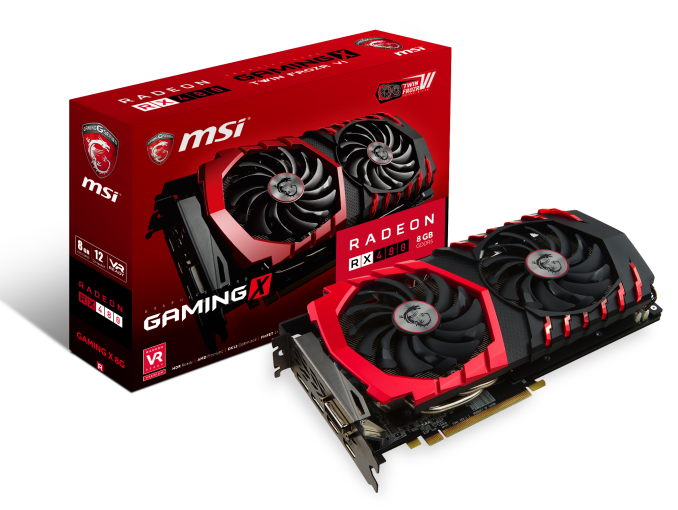
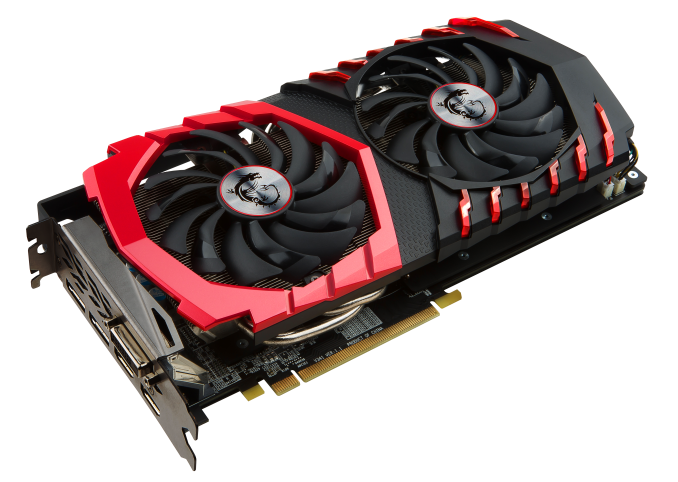
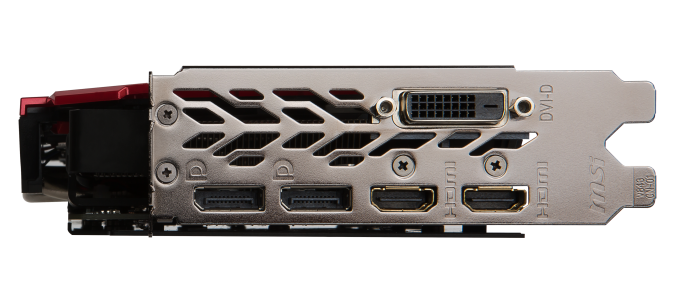
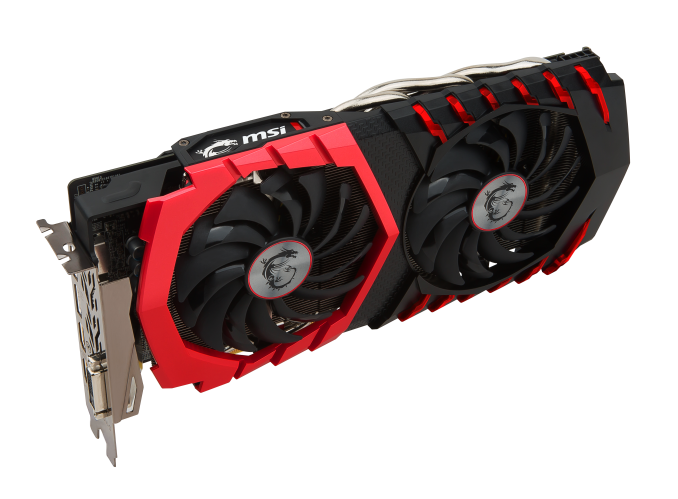

 Quote
Quote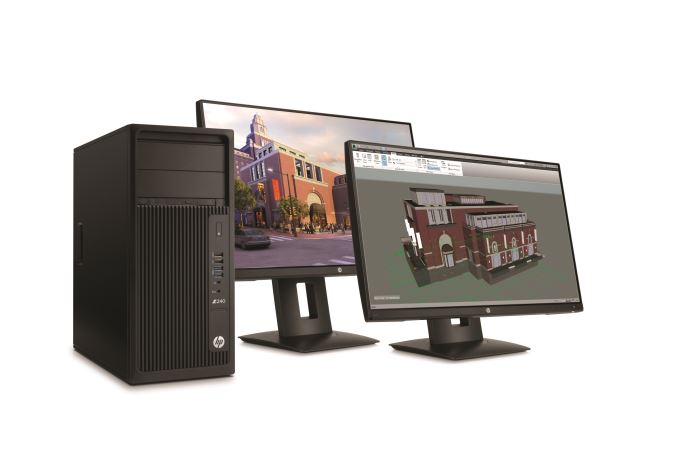
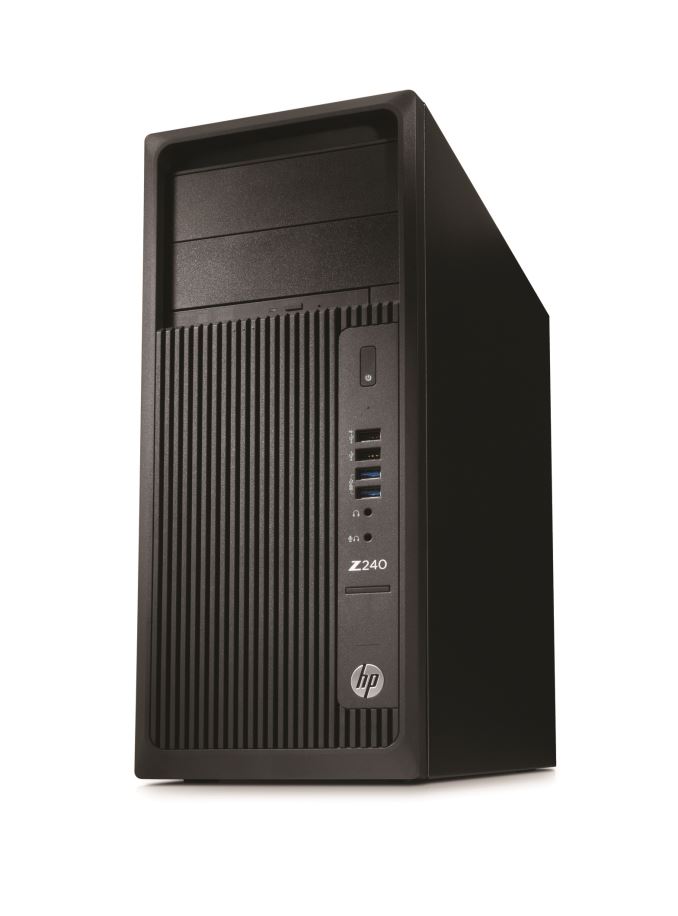

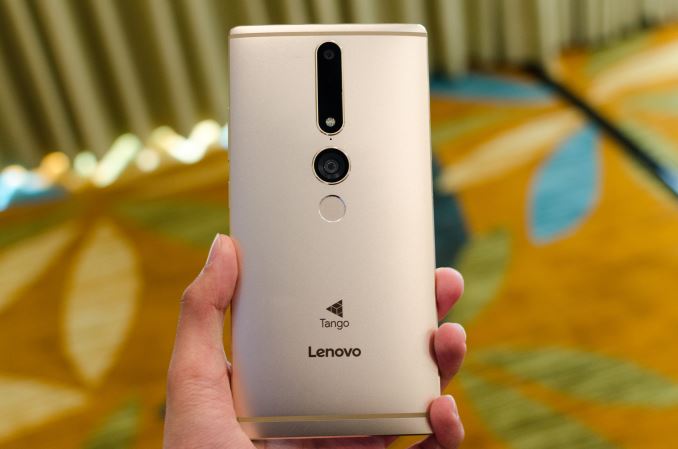



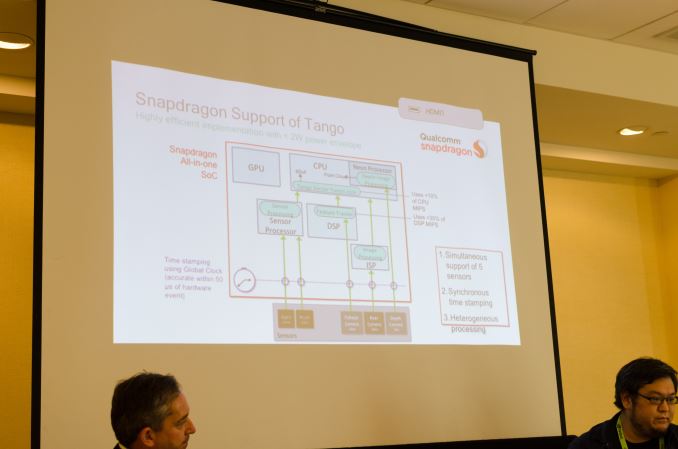


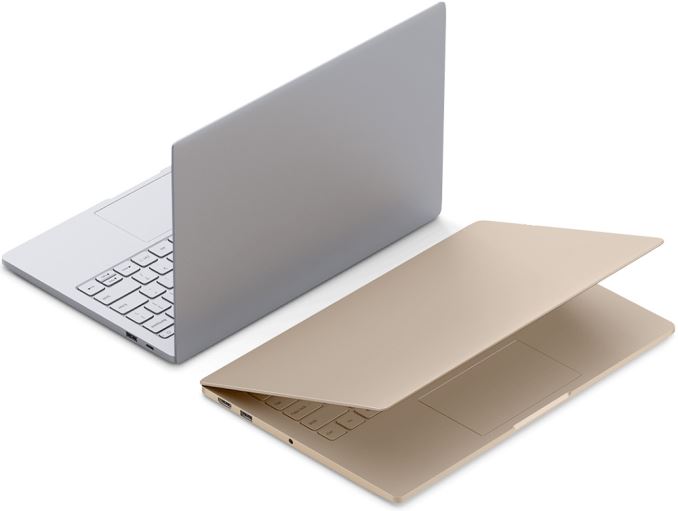
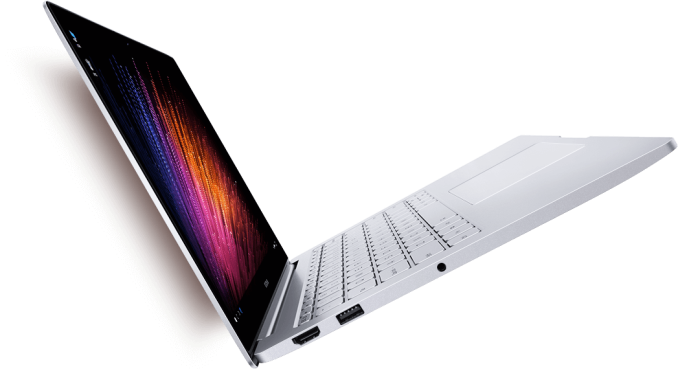

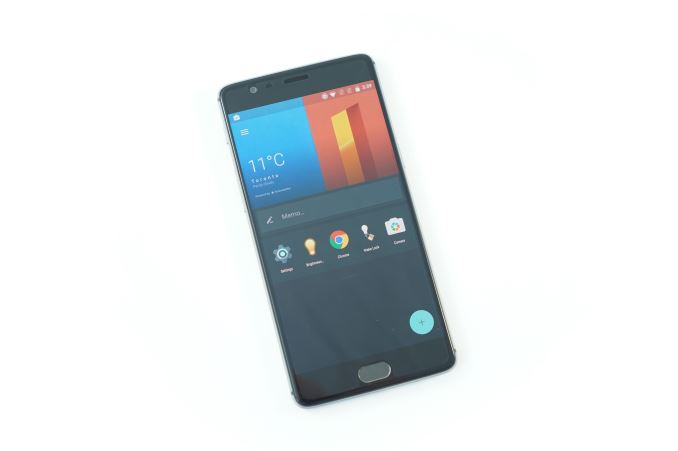

















Bookmarks